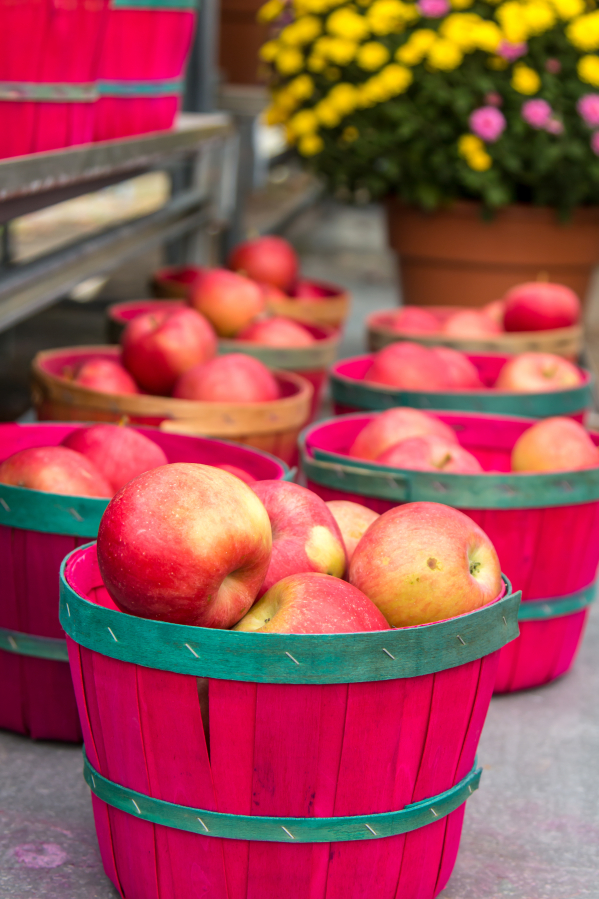Apples: the fruit of temptation and late summer delight. Apples are still hand-picked each harvest season, from August through November.
As Americans we love apples and eat on average 65 fresh ones per year. There are currently more than 7,500 different varieties of apples grown around the world and 2,500 varieties grown in the United States. Washington has 175,000 acres of apples orchards under cultivation and exports to 60 different countries.
The seven principal varieties grown commercially in Washington are Gala, Fuji, Granny Smith, Honeycrisp, Pink Lady, Golden Delicious and Red Delicious. Recently developed varieties now being offered to consumers include Jazz, Opal, Pacific Rose, Ambrosia, Autumn Glory and Cameo.
Most apples are excellent for home preservation, with the exception of Red and Golden Delicious which are really better eaten fresh. Apples can be canned using a water-bath canner, with an approved recipe. Once you’ve selected your fruit, which should be free of bruises and blemishes, you can make your apples into delicious jams and jellies, savory chutneys or applesauce.
For safe recipes check out the National Center for Home Food Preservation at http://nchfp.uga.edu/index.html.
Apples can also be preserved through dehydration. This preservation method is easy, fun and kids love being a part of the process — and eating the results. Dried apples make great snacks or additions to cereal and granola.
Once the core is removed, cut into thin rounds or slices. Although not necessary, apples can be treated to prevent browning. Dissolve 1/2 teaspoon ascorbic acid in 3 tablespoons water and sprinkle over apples slices, let soak for a few minutes then drain well. Place slices of fruit in a single layer on the dehydrator tray, making sure the slices do not overlap. Rotate trays throughout the drying process for even drying. Apples are done drying when they are still pliable but there are no signs of moisture when cut in half. Store dried apples in a sealed plastic bag or airtight container.
Consider freezing apples if you do not want to take the time to can or dehydrate. Although the quality of frozen apples are not always great, they work well for pies, applesauce or any recipe that calls for cooked apples. Make sure to choose firm, crisp apples. Dry pack is the easiest method to freeze apples. Simply layer cored, peeled individual slices on a cookie sheet and put in freezer. If desired, treat to prevent browning as described above. Use a spatula to remove slices when they are frozen solid. Store frozen apples in freezer grade plastic bags or containers.
Washington apples are a wonderful treasure. Look for traditional and newer varieties in grocery stores and farmers markets. Use the Farm Finder to locate local farmers selling apples in your area: http://smallfarms.wsu.edu/farms/locate_search.asp
For apple recipes and serving suggestions, check out Chef Scotty’s Market Fresh Recipes at http://ext100.wsu.edu/clark/?p=8163.
For additional recipes, food preservation and food safety information visit http://ext100.wsu.edu/clark/?p=1134. Have questions? Call the master food preserver helpline at 360-397-6060, ext. 5366, or join the Facebook Discussion Group “WSU Home Food Preservers – Clark County.”



